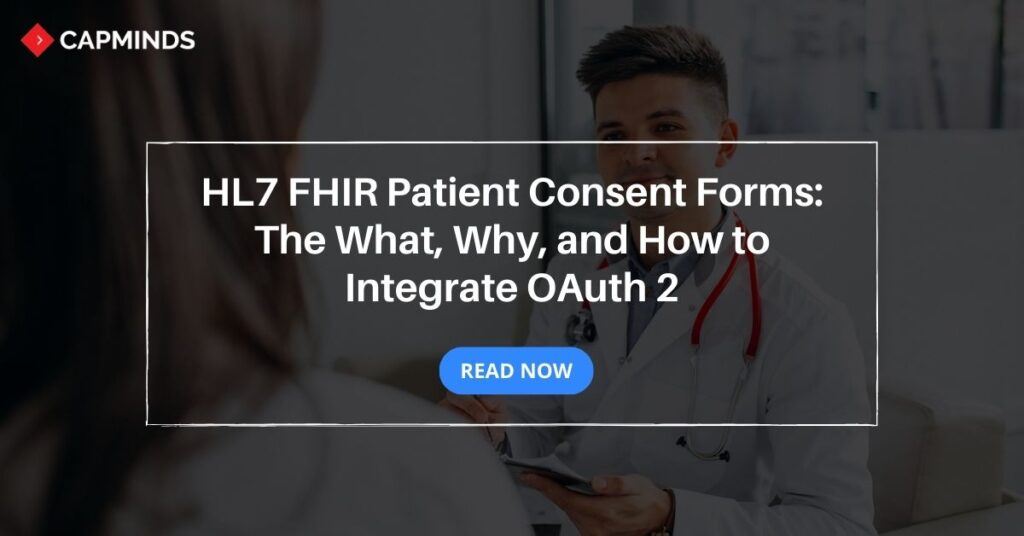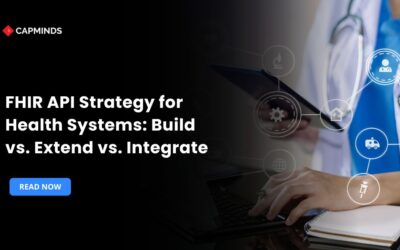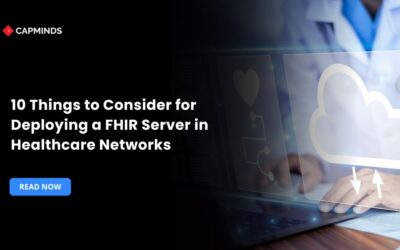HL7 FHIR Patient Consent Forms: The What, Why, and How to Integrate OAuth 2
In the critical environment of the healthcare industry, health interoperability and health data exchange are important to provide better quality healthcare. While many standards are used for health interoperability, HL7 FHIR stands out and has become popular.
With HL7 FHIR, patients can now access limited access to medical records from third parties they trust. However, efficiently managing and tracking patient consent can be challenging across multiple systems.
In this blog post, we will explore what is HL7 FHIR’s consent form, why we need to integrate OAuth 2.0 with FHIR consent, and How to Integrate OAuth 2.0 with FHIR for Consent.
What are HL7 FHIR Patient Consent Forms?
HL7 FHIR consent resource is a way for healthcare providers to ask patients’ consent for treatment using HL7 FHIR standard format electronically.
Traditional method – a patient is required to sign a paper form and the providers will hand over all the patient medical paper records.
Now Imagine This – a patient using a mobile app on a smartphone, and whenever the patient is requesting health records, the app will download a consent form that you can print, sign, and share with your providers without stepping out of your home.
Digital patient consent forms during the sharing of patient records improve the patient experience. Some key points about the HL7 FHIR Patient Consent Forms:
- They allow structured patient consent data to be exchanged electronically between healthcare systems.
- The Consent forms are based on the FHIR standard for health data exchange, allowing consent data to integrate with other clinicals.
- They define an FHIR consent resource with data elements like demographics, and descriptions of what the patient is consenting to.
- They can reduce the paperwork burden and manual consent form processing compared to traditional paper-based consent forms.
- They enable easier access to patient consent documentation across care settings. Consent can be electronically retrieved whenever needed.
HL7 FHIR Patient Consent Forms allow interoperable, electronic capture, and exchange of patient consent data using FHIR standards.
Related: The Use of HL7 FHIR in OpenEMR: An Exclusive Comprehensive Guide
Why Integrate OAuth 2.0 with FHIR Consent?
The FHIR consent resource allows patients to electronically provide, revoke, and manage consent to collect medical records.
However, FHIR consent resources do not include any authentication or authorization protocols themselves. This is where OAuth 2 comes in with a solution.
Integrating OAuth 2 and FHIR consent provides security, privacy, and usability benefits:
- Enhanced Security: OAuth 2.0 enables authentication and authorization to protect health records, which ensures only authorized parties have access to consent resources.
- Privacy Control: Patients can selectively grant access to consent resources without sharing the credentials. OAuth 2.0 allows granular access control.
- User experience: OAuth 2 enables single sign-in across apps/services, avoiding the need to re-enter credentials to manage consent.
- Standards-based approach: OAuth 2.0 is an open standard for API authentication and authorization. Integrating it with FHIR facilitates interoperability.
- Flexibility: OAuth 2.0 supports various flows (authorization code, client credentials, etc) to meet different security needs.
Integrating OAuth 2.0 with FHIR consent combines the consent capabilities of FHIR with enhanced security, privacy, and usability of OAuth.
How to Integrate OAuth 2.0 with HL7 FHIR for Consent
Step:1 Setup OAuth 2.0 authorization server
- You need to start by Installing and configuring an Auth authorization server that supports the OAuth 2.0 framework.
- Register a new client application on the authorization server to represent the FHIR server.
- Configure scopes and claims for client applications.
Step: 2 Update the FHIR server to use OAuth 2.0
- Update the FHIR server to integrate with the OAuth 2.0 authorization server.
- Configure the FHIR server to validate access to tokens from the authorization server.
- Update the FHIR API endpoints to require a valid access token.
Step: 3 Implement FHIR consent resource
- Define a consent FHIR to represent a patient’s consent for data sharing.
- The consent resource should include information like patient ID, date, organization, scope of access, etc.
- Configure the FHIR server to manage and store patient consent resources.
Step: 4 Check consent before providing access
- Update the FHIR API endpoints to check for patient consent before providing access to data.
- Before returning any patient data, verify that there is a valid consent resource in place allowing the requested access.
- If consent is not found, return a 401 unauthorized error.
Step: 5 Manage consent revocation
- Provide a means for patients to revoke consent, such as a user interface or API endpoint.
- Once consent is revoked, update your consent resource status and expire any outstanding access tokens.
- Access attempts with a revoked token should be denied.
Step: 6 Testing and Auditing
- Thoroughly test the integrated OAuth and consent workflow.
- Implement audited record access attempts, tokens used, consents checked, errors, etc.
- Configure alerts for unauthorized access attempts or consent violations.
Related: HL7 FHIR Implementation: Better Standardizing Maternal & Infant Health Data Exchange
Potential Challenges with the HL7 FHIR Consent Form
1. Complexity of FHIR Consent Resources
FHIR has several consent resources for representing consent such as consent, contract, legal case, etc. Each consent resource has a complex structure with many optional elements. Deciding which element to use can be difficult.
Solution: You need to develop a consent-specific OAuth scope and conventions for the use of FHIR resources.
2. Lack of Consent-Specific OAuth 2.0 Scopes
OAuth 2.0 defines scopes for accessing health data but lacks specifically for managing consent. This makes it tricky to restrict API access to consent operations only.
Solution: Use smart and FHIR scopes wherever possible to make use of the existing standards.
3. Matching Fine-Grained Scopes to Broad Consent Directives
OAuth scopes are broad while FHIR consent directives can be very granular. Mapping between these two can be challenging.
Solution: Make use of OAuth 2.1 features like fine-grained and temporary scopes to align with FHIR consent directives.
4. Revoking Access After Consent Expiry/Withdrawal
FHIR consent resources allow setting expiry and withdrawal criteria. However, revoking OAuth tokens when consent changes state is challenging.
Solution: Implement a consent management module that connects to the OAuth authentication server to revoke tokens on consent state changes.
5. Auditing Consent Over Time
FHIR Maintains consent history while OAuth tokens have short lifespans. Auditing consent decisions over time can be difficult.
Solution: Store OAuth access metadata with FHIR consent resources to enable auditing and reporting.
Though challenges contain many technical difficulties, navigating through them is crucial for better and seamless health data exchange. By relying on an expert team like CapMinds for HL7 FHIR interoperability, you can ensure that everything is smooth.
CapMinds HL7 FHIR Interoperability Solution
CapMinds offers the best all-in-one health interoperability solution for healthcare practices.
Our HL7 FHIR service will have a clear understanding of your clinical needs and requirements to cater to our solution.
We have years of experience in this field faced many challenges and tackled them with ease. Why can CapMinds be your Go-to Interoperability Solution?
- We are experienced professionals with years of experience in the field.
- Our technical team is an expert who will analyze your healthcare practice thoroughly to tailor the Interoperability solution.
- We prioritize safety, security, encryption, and authentication to protect your healthcare practice patient’s data.
- Our comprehensive solution ensures seamless interoperability adhering to industry standards, and using standard protocols.
- We offer comprehensive training sessions to healthcare staff.
- Our affordable health interoperability solution benefits healthcare practice at all levels.
If you want to seamlessly integrate healthcare systems, we can assist you by navigating all potential challenges and ensuring seamless health data exchange.
Reach out to CapMinds Health Data Exchange Solutions for your Healthcare Practice.




